

Climbing legend Wanda Rutkiewicz
From wikipedia
Wanda Rutkiewicz (née Błaszkiewicz) (Polish pronunciation: [/ˈvanda rutˈkʲevitʂ/] 4 February 1943 – 12–13 May 1992) was a Polish mountain climber and computer engineer. She was the first woman to reach the summit of K2 and the third woman (first European woman) to climb Mount Everest.
Wanda Rutkiewicz was born into an educated Polish family in Plungė, Lithuania. Her father, Zbigniew Błaszkiewicz, was an engineer for the Communal Building Projects Bureau (Biuro Projektów Budownictwa Komunalnego). Zbigniew was also a passionate sportsman.
Rutkiewicz was a multi-sport athlete. Every day, before elementary school, she would practice running with her school's coaches. She trained long jump, discus throw, and high jump. In 1961 she won the gold medal in the Polish University Club Championships in the shot put. As a student in the Politechnic institute, she joined the Academic Sports Union (AZS Wrocław), where she opted to play volleyball
Her first major expedition was to the Pamir Mountains.
30 years passed since Wanda Rutkiewicz vanished in her beloved highest mountains.
"To the occasion 30th anniversary of Wanda Rutkiewicz's death, the Sejm of the Republic of Poland pays tribute to one of the most outstanding mountaineers in the world." This is the official statement of the Polish parliament, which this year honored the legendary Wanda Rutkiewicz. In 1992, she disappeared under the peak of Kanchenjenga and has not been seen alive or dead since. Read her dramatic life story.
She was born as the second of four children into a torn home in a broken country, to World War II in the town of Plungiany in present-day Lithuania. Her father was not a very well-established man, and the family had only a minimum of money. First they experienced oppression from Germany, later from the Soviets. When, before the end of the war, their home fell into Soviet hands and their property was confiscated, her family moved to Poland. But the war-torn country has prepared for them a painful experience in addition to a new beginning. While playing with an unexploded grenade, Wanda's older brother lost his life.
In Poland, at the age of sixteen, she entered the Wroclaw Polytechnic, later she began working at the Institute of computing machines. Since childhood, she was a gifted sportswoman, for example, she was the captain of the volleyball team. But she got to mountaineering, which eventually became a lifelong passion for her, thanks to a friend. From the first climbing walls, she worked her way up to the mountaineering course in the Tatras in just a few years in 1964. (High Tatras are on the former Czechoslovakian - now Slovakian-Polish border).
Soon she was heading to Pamir on Lenin Peak (7134 meters) or to the Afghan Hindu Kush on the seven-thousand-foot Noshaq (7492 meters). The success of the expedition was soon marred by another tragic event, when Rutkiewicz lost her father, who was murdered. This, too, contributed to her paranoid fears of humans and brought her even closer into the dangerous world of high-altitude climbing.
She professed the philosophy "you do not enjoy life to the fullest until you risk losing it" and put all the money and time into climbing. This, too, contributed to the end of her first marriage already three years after the wedding.
When the personal failure was joined by criticism and rejection from male climbing colleagues, which caused her dominant, even "male" approach, so to climb Nepalese eight thousandth Lhotse (8516 m), they preferred to add another climber.
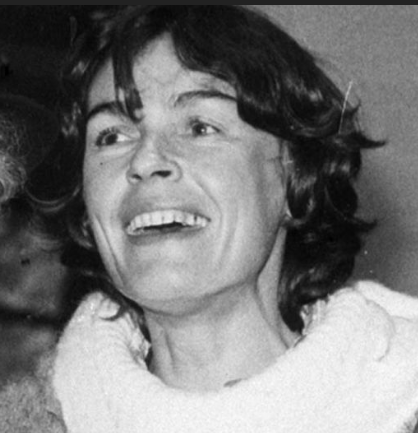
Therefore, Rutkiewicz took the situation into her own hands. The year 1975 was the International Year of women, and on that occasion she organized an all-female expedition to Pakistan's Gasherbrum III (7952 m). She was supposed to share the camps with male colleagues who climbed the neighbouring Gasherbrum II (8035 m).
But the cooperation between the teams and the need to lead such a large expedition did not suit Rutkiewicz. Her indecision, changing priorities and a certain degree of recklessness contributed to the fact that most climbers soon turned against her. She climbed Gasherbrum III, but not in a purely female pair, as she had publicly planned, but in a foursome with another woman and two men.
The second female pair, who was supposed to ascend the summit the day after, therefore changed their plans and instead headed for a secondary summit, and thus became the first women on the Gasherbrum II. And the aforementioned change of plans and unrecognized cooperation with men became the main points of ridicule against the Polish climber.
Although she did not have many friends among the climbing community because of her stubbornness and idiosyncratic approach, her climbing qualities could not be denied, and so Rutkiewicz was invited to the ultimately unsuccessful expedition to Nanga Parbat (8126 m). When she climbed the northern wall of the Alpine Matterhorn (4478 m) in the winter, which was quite a respectable feat, offers for further expeditions, despite her nature, only flocked to her.
She always wanted to show the world that mountain climbing is a sport for both sexes and that women are able to achieve equal results with men. But when an invitation to Everest came to her in 1978, she could not refuse, despite the fact that it was a predominantly male expedition. Here, too, her character was manifested when, in the top team, she refused to help her colleague descend to the base camp and instead continued to the top of the mountain. She also had disagreements with male partners about the equipment carried.
She reached the summit of Everest fifteen minutes later than her male colleagues, becoming the third woman overall, the first European and the first Polish to ever stand on the highest mountain in the world.
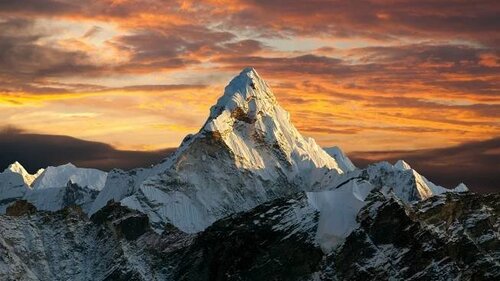 Mount Everest
Mount Everest
By coincidence, reaching the Everest peak came on the day when the polish Karol Wojtyla was elected pope John Paul II. When she later met him and gave him a pebble from the summit of Everest, he replied, " It must be the will of God that we were both raised so high on the same day."
Despite the success, which seemed to be the logical peak of her climbing career, Rutkiewicz lived for some time with a minimum of money, moving from apartment to apartment, her personal life was in ruins, and other top representants of Polish Mountaineering did not like her very much. She tried to find in her life another occupation, which for a short time became automobile racing. However, it was not long before she returned to climbing. First to the Tatras, but already in 1981 she was preparing for a women's expedition to the most dangerous mountain on the planet, the Pakistani K2 (8611 m).
During her training at Elbrus in the Caucasus, an unpleasant thing happened to her, a fellow climber fell on her, and Rutkiewicz shattered her femur in the accident. Despite repeated operations and a long convalescence, typical of her bulldog nature, she stood in the summer of 1982 under K2 with crutches and the task of commanding an assault climbing team from the base camp. However, they did not do well, in the second camp one of the climbers died of heart failure. After 69 days, the women's team gave up their efforts.
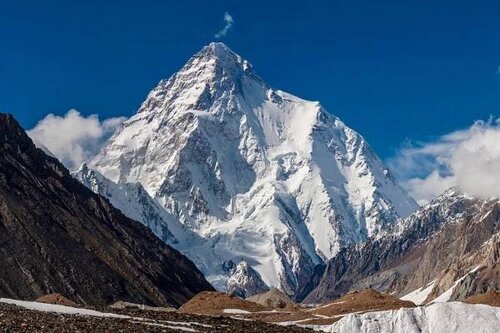 K2 - Savage mountain
K2 - Savage mountain
However in a new expedition on 23rd June 1986, which was later nicknamed the "black summer", in a small four-man team Wanda ascended to the top of perhaps the most dangerous mountain in the world, K2. A mountain no woman has ever climbed before. Several unplanned bivouacs at high altitude and a minimum of equipment made their journey difficult. However, her two companions, the French Barrards, did not survive the descent from K2. That summer, the mountain took a total of 13 lives. By that time, a total of 12 climbers had died on its slopes. In one season, the number doubled.
Wanda despite the tragedy, fatigue and frostbite, in the base camp practically packed up for a solo ascent in alpine style to the next Broad Peak (8051 m). But she didn't even make it to the first camp. Even so, only a few months later she set off for Nepal to attempt Makalu (8485 m). There were never enough high mountains for her, and although she escaped the summit, she only got to 8000 meters, an ambitious plan was hatched in her head to win the Crown of the Himalayas - to climb all fourteen eight-thousanders.
Almost immediately, together with several other climbing stars, such as Jerzy Kukuczka and Artur Hajzer, she set out for Annapurna (8091 m) - poorly acclimatized and ill, she had no real chance to climb it....
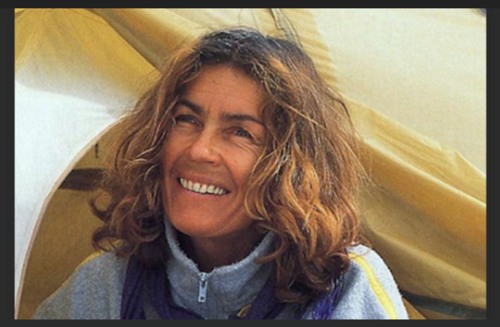
Kukuczka, who managed to win the Crown of the Himalayas a few months later, invited Rutkiewicz to an expedition to Shisha Pangma (8027m), he himself died soon after during the ascent to Lhotse. Rutkiewicz wanted to follow up on the successfully conquered Shisha Pangma with Gasherbrum I (8080 m), this time her partner was German Kurt Lyncke, with whom she fell in love.
After climbing Gasherbrum, the couple wanted to use acclimatization and run out to the next Broad Peak, but Kurt slipped on the first day of the ascent and died before her eyes. He was next on the list of all her acquaintances who did not return from the high mountains.
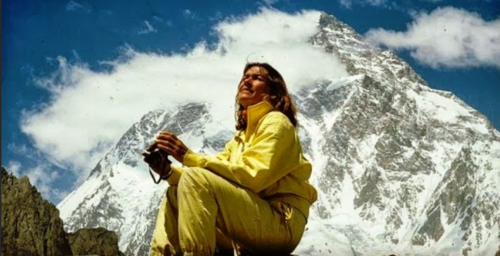
Having lost another beloved person, Rutkiewicz stopped hiding her plan and publicly declared her interest in the Crown of the Himalayas = The fourteen Peaks over 8000meters . She almost succeeded in Kanchenjunga (8586 m), quite quickly mastered Cho Oyu (8188 m). She had seven mountains left, and Annapurna was next. Rutkiewicz threw herself into a solo ascent of the south wall. From the mountain she brought a dark, hazy photo proving that she had ascended to the top. Although the commission of the Polish Mountaineering Association confirmed that Rutkiewicz managed the ascent, some climbers did not agree. Some followed her progress with binoculars, others knew the summit themselves - according to them, the climber turned just below the top of the mountain.
In her nearly 50 years, she was about to attempt for the third time Kanchenjenga, the third highest mountain in the world, her ninth 8000 meters. If she had succeeded, she would have been the first woman to climb the three highest mountains in the world. She wasn't in the best of health, pneumonia and a sore leg were taking their toll. The climb was difficult and only Rutkiewicz and her climbing partner, Mexican Carlos Carsolio, were left.
The peak attack was launched on the 7th. May 1992, five days later they headed to the top on the last leg. Twenty years younger Carsolio went ahead, breaking his way through deep snow. At five o'clock in the afternoon he reached the top. He met Rutkiewicz already in the dark in the crypt at 8300 meters, where she told him that she would rest and climb up. Carsolio begged her to come down with him, but she insisted on climbing. So he described to her the way she had asked him, tried once more to persuade her to descend, and then descended himself.
In the high-rise camp, he waited for her for three days. When she did not come, he left her a fully equipped tent and descended to the base camp. There was not a single climber on the whole mountain who could help her.
Date of her death was set up to 13th May 1992. 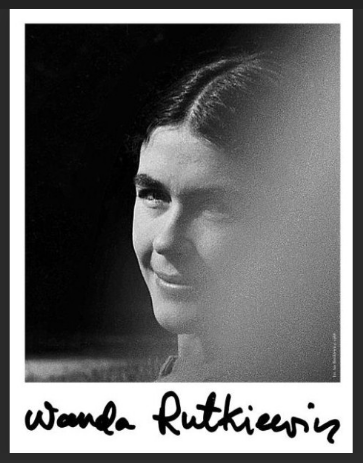
Rutkiewicz's mother refused to believe the news of her death, so little information about her disappearance appeared in Poland. The family tried to set up an expedition to find her body, but the expedition did not even leave because of problems with the insurance. There was a moment of hope when, three years later, Italian climbers found a woman's body on the mountain, but it later turned out to belong to a Bulgarian climber. Rutkiewicz's body hasn't been found yet. Whether she ascended to the top of Kanchenjenga before her death also remains an unanswered question.
Rutkiewicz's goal was to become the first woman to reach the summits of all 14 of the eight-thousanders. During her climbing career she successfully climbed the following mountains:
1975 – Gasherbrum III[9]
1978 – Mount Everest
1985 – Nanga Parbat
1986 – K2
1987 – Shishapangma
1989 – Gasherbrum II
1990 – Gasherbrum I
1991 – Cho Oyu
1991 – Annapurna I
1992 – Kangchenjunga (uncertain)
" I am determined and it gives me a sense of freedom. Freed from everything that is not the Mountain and me, free from fear and anxiety – because I no longer have a choice. "
"Every man has his or her Own Mount Everest to climb in life."
Wanda Rutkiewicz
Thanks for reading
Margaret
